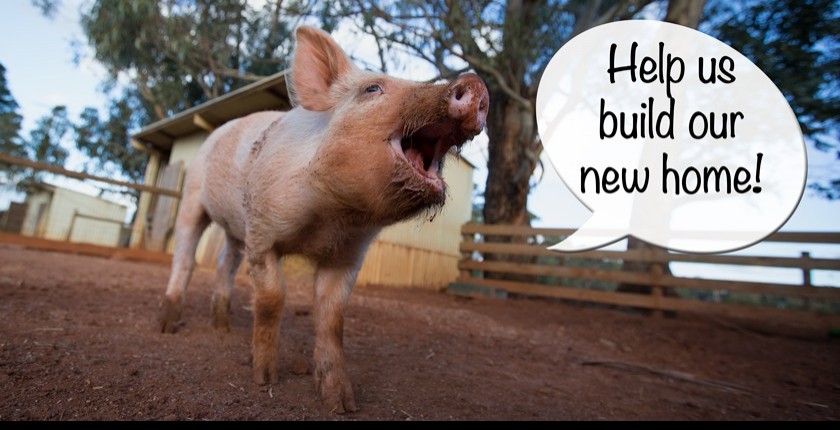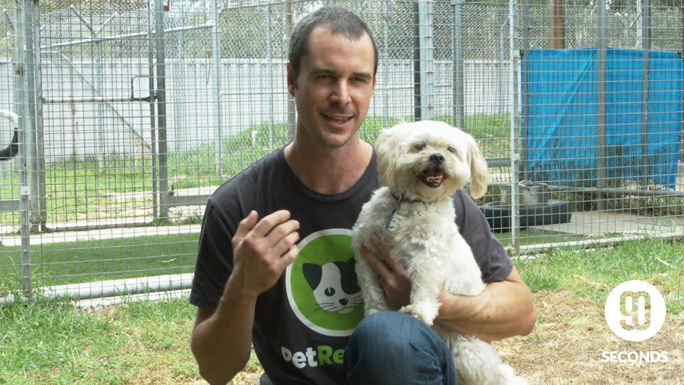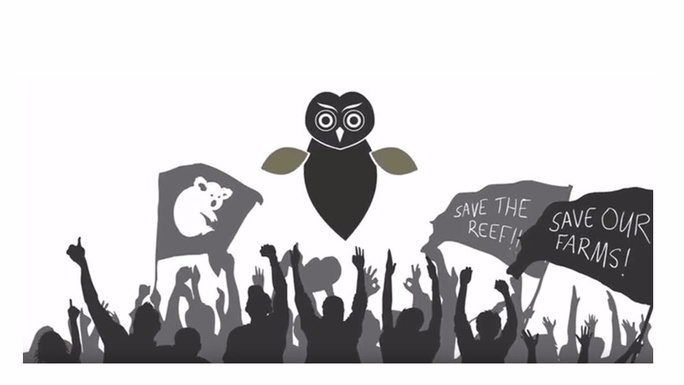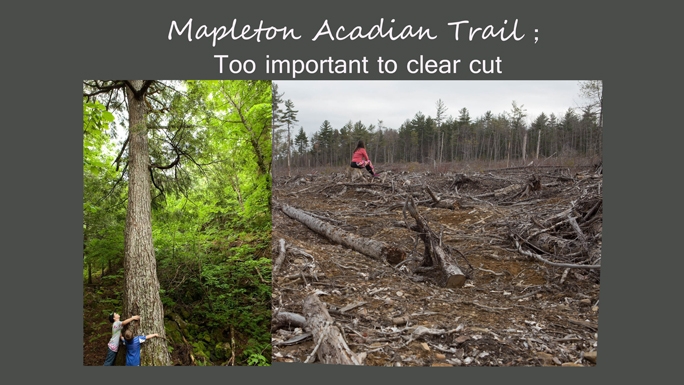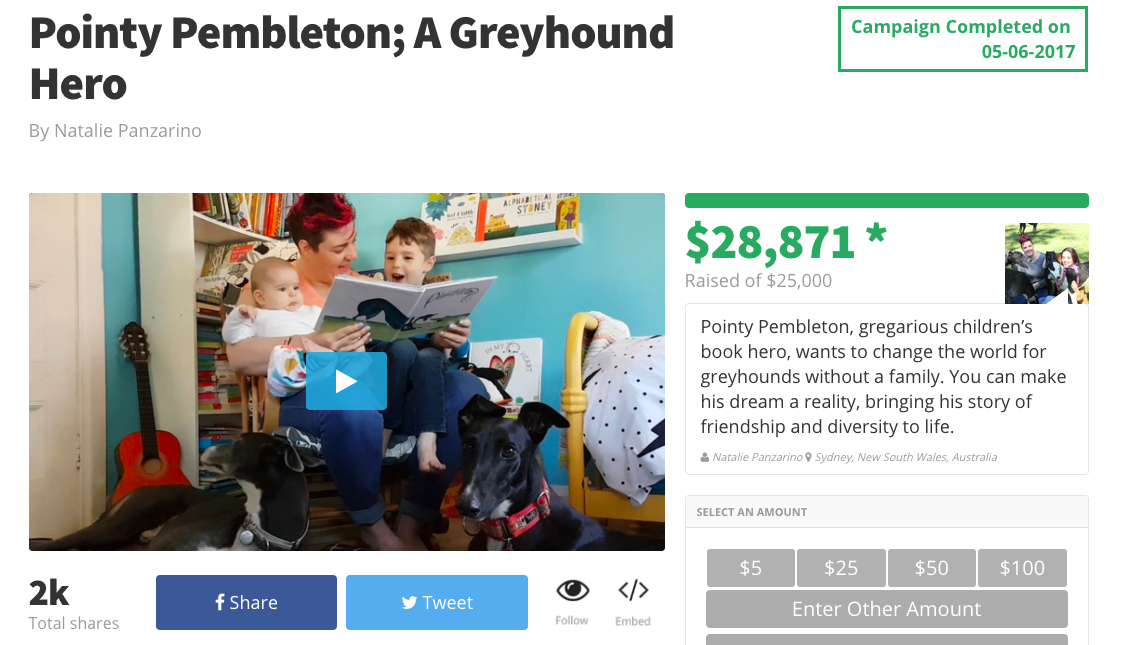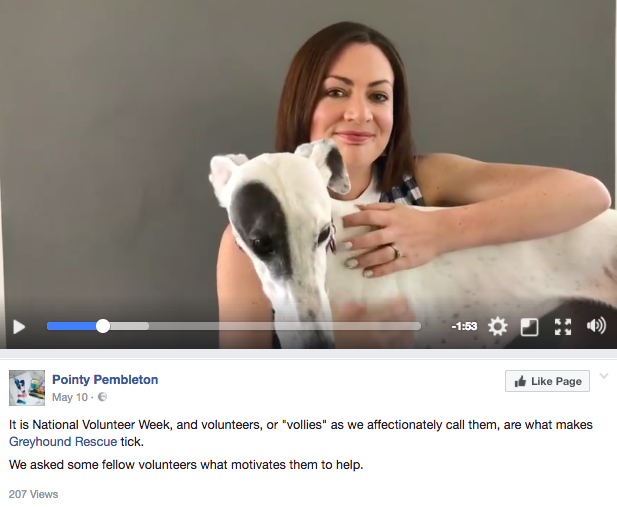At Chuffed.org, we love seeing parents, teachers, students – people like you – coming together to support their local school. We’ve seen campaigners raise thousands for playgrounds, excursions, programs and plenty more.
To help you run the most successful school crowdfunding campaigns that you can, we’ve put together this guide that will step you through creating an effective crowdfunding page.
The Crowdfunding Campaign page
A crowdfunding campaign page is the page on Chuffed.org where you’ll direct supporters, donors, friends and family. It includes the details of who you are, what you are trying to achieve and how you plan to do so. It’s the place supporters actually donate to your campaign.
Choosing the right options and including information in an easily digestible way is important and can be the difference between a good campaign and a great one.
A campaign page looks a bit like this example (below) from the Central Coast Montessori Primary School. The title is at the top, followed by the name of your organisation. To the left of the screen under the title is the campaign banner or video; on the right is the campaign target and counter. Under this is a box containing your campaign’s ‘pitch’ and buttons supporters use to initiate their donations.
Beneath these is the main body text outlining your campaign’s story – the campaign description. The tabs can be switched to show comments from supporters, and names of supporters. On the right next to the main story are where perks are listed should you choose to have them.
Click here to see the full campaign page.

Setting up your campaign page
All the components of a crowdfunding campaign page are stepped out below alongside examples from successful school campaigns we’ve hosted on Chuffed.org.
We’ve also created this handy Google Doc template that you can use to collaborate with your team. It contains some more examples from great campaigns.
To start setting up your crowdfunding campaign page, head to chuffed.org/start.
1. Campaign title
This is what your campaign is called. The title shows at the top of your campaign page and is shared with potential supporters when you share the campaign out via Facebook and Twitter – so the title (along with the banner image – more about that below) is the first thing people will see.
Good titles are less than 5 words long and are like the title of a book: memorable or catchy. You might include alliteration, a question, a play on words or unique spelling.
Some real examples from successful campaigns:
- Graduate to Greatness
- Education in a suitcase
- Rocklands Book Nook Appeal
- How Cool is Our School – a – thon
- Every kid deserves a slam dunk!
2. Target
All campaigns on Chuffed.org need to set a campaign funding target. You’ll receive your funds even if you don’t hit your target, but it’s important to set your target at an achievable level to build credibility with your supporters.

You should set your target based on three factors:
- Cost: What does it cost to deliver your project?
- Audience size: How many people do you have already in your database or email list?
- Available time: How much time do you have to prepare in the 4 weeks prior to the campaign and promote during your campaign?
As a rough rule of thumb, we find that the following is a reasonable way to set your target:

Email contacts are the most valuable, followed by Facebook friends and then Twitter or LinkedIn contacts.
3. Timeframe
On Chuffed.org, you can choose to either run your campaign for a fixed length of time (90 days or less) or ongoing with no end date in what we call Infinity Mode.
If it’s your first campaign, we generally find that you’ll raise the most when you run a 30-40 day campaign. The reason for this is that the time pressure forces your team to act, which drives momentum, which brings more people to your campaign. Campaigns that stretch on for a long period of time struggle to gain interest because supporters get distracted by other things in their lives.
4. Writing up your campaign
This is where you tell your supporters about your project: why your cause is important and what you are doing to make a difference.

Pitch
The pitch is short blurb to describe what you’re doing in 200 characters. It sits in a box just under you campaign target on the campaign page.
It is what potential supporters are likely to read first and helps them understand quickly what your project is about. Remember: they’re busy, and they’ll be skim reading, so the pitch is your chance to grab their attention and tell them why they should read your full campaign description. Be as succinct, specific and engaging as you can.
Here are some examples of good pitches used by real school campaigns on Chuffed.org:
Please help Rocklands school to rejuvenate our library. Every penny will count, from furniture to books, we’d love your help! Please support our 73 children build their dream library.
We are raising funds for Crestmont, our beloved parent co-operative school in Richmond, California. We need a permanent home in order to sustain Crestmont’s legacy. Please consider making a donation today!
Montmorency Primary School needs your help… we’re hoopless!
And some not so great pitches:
Help us build a new building for our school.
We’re trying to produce and distribute books that inspire our children to become AMAZING people.
Campaign description
This is the larger block of text on your campaign page and it’s where you can go into detail about what you’re doing. The best campaigns use about 300-500 words, combined with pictures, to tell a story about the change they want to make and how they plan to do it. You can even embed images or videos that you might have (in addition to the main campaign banner or video – described below).
As your campaign progresses, you can keep editing your campaign description. It’s a great place to put in progress updates- like Edgar’s Mission did in this award winning campaign – so that supporters who are checking your page regularly have fresh content to enjoy. The folk at North Perth Primary School also did this really well in their campaign to build new outdoor play equipment.
Below is a simple structure you can use for your campaign description. The example we’ve used is a summarised version of the excellent North Perth Free-Climbing Dome campaign run by North Perth Primary School. Click here to see their full campaign page.

EXAMPLE CAMPAIGN DESCRIPTION STRUCTURE
Section: Background
In this section:
- Introduce your vision for change and/or the story of who you are.
- Tell supporters briefly about the issue you’re addressing and why you want to do something about it.
- Use first person stories over facts and numbers to paint a picture.
Example
North Perth Primary School desperately needs more play equipment. So the P&C set out to find a solution. During our research we learned that imaginative physical play is proven to help children’s development: socially, emotionally, physically and intellectually.
Section: What we’re doing
This is where you should:
- Describe your project in practical detail. If you’re building something, show drawings or images of what it’s going to look like.
Example
We found the perfect solution in the Explorer Dome – a multi-layered net structure developed in Germany – designed to provide unlimited opportunities for challenging, imaginative play.
We have the perfect place for it on the school oval, where our kids can enjoy the active play that we know helps build strong bodies, minds and hearts. And in that lovely grassy spot, all the children and families in the community can enjoy it after school and on weekends. It’s perfect.
Section: What we’ll do with the funds
In this part you should:
- Break down your target and talk about what exactly the money will be spent on.
Example
But large free-climbing domes that’ll last a lifetime don’t come cheap. The Explorer Dome will cost around $85,000. We’ve been working hard to raise the money for over a year now. The P&C has raised $25,000, the school has committed $10,000 and the City of Vincent has generously donated $10,000.
We just need the final $40,000 to make it happen. That’s around $88 for every student the school.
Section: Who we are
People give to people. They want to supporter a person, not a faceless project. So:
- Add a bio of yourself and your team.
- Add quotes from well known people to build credibility.
Example
*North Perth Primary School use the visuals in their campaign video to show their school community at play.
Additional sections
You may also want to include sections in this main body text about:
- Perks – Describe the perks that donors get back for donations at different donation levels. You can insert pictures that show them.
- Media – Tell supporters about any media articles you get about your campaign. You can use the logos of the media outlets to build credibility.
Another example
Another great example comes from Rocklands Community Primary School in Norfolk, who blitzed their £10,000 target (raising £12,731) to put towards a new library. See their campaign page here. They take a different approach to the structure laid out above – presenting first information about the problem they have and then the solution and how donors can help.

5. Banner image
The banner image is the main visual element of your campaign. It’s the first thing potential supporters see and it gets shared on Facebook and Twitter alongside the campaign’s title.
You want your image to:
- Make your supporters feel inspired, entertained or curious, not guilty or shocked.
- Be formatted to 684 x 385 pixels for optimal compatibility on our site.
- Be in a normal image format – JPG, PNG or BMP.
For clarity, Chuffed.org is a guilt-free site. We reject campaigns that use guilt-imagery like dehumanizing photos of starving children to get donations, or graphic, disturbing images of animals.
This one comes from Merrylands East Public School’s campaign to raise funds for equipment and expertise for digital storytelling. View their campaign here.

6. Video
The best crowdfunding campaigns include a campaign video. This is a specific 2-5 minute video created for the campaign. Don’t use a generic promotion video designed for something else.
Campaign videos don’t need to be expensive or have high production value. It’s far more important that the video tells a compelling story than looks pretty.
Here are some tips:
- People love seeing faces. Make sure the video includes relevant people talking at the camera at some point.
- Keep it short. People get bored easily, so unless you’ve got an incredible storyline, don’t have a video longer than 3 minutes.
- Be ridiculously enthusiastic. Not only do viewers feed off your enthusiasm, video has a weird way of taking normal speech and making it look like you’re bored senseless. If you act ridiculously enthusiastic, it looks completely normal on video.
- Use narrative storytelling over facts. People share stories, not facts. An easy way of doing this is to follow one person’s story – which could be your own or a beneficiary.
- Later model phone cameras and DSLR cameras take excellent quality videos. If you can pair that with a free movie editing package like iMovie on Mac, you can create fairly professional looking video for free.
- If you do end up paying a production company for your video, budget at least $2,500/£1,500 for a 2 minute video.
All videos on Chuffed.org need to be uploaded to Youtube or Vimeo first. You then enter the URL from either service into the relevant field in the campaign editor.
Examples: For some inspiration, take a look at these amazing videos:
- Crestmont School (in California) : Support Crestmont School’s Forever Home
- Montmorency Primary School (in Victoria, Aus) : Every kid deserves a slam dunk!
- The Karrkad-Kanjdji Trust (in Northern Territory, Aus) : The Nawarddeken Academy – A School for Kabulwarnamyo
- The Central Coast Montessori Primary School (NSW, Aus) : Image the Central Coast Montessori Primary School

7. Creating perks
Perks are things that you offer supporters who donate above a specific amount.
We get asked a lot about perks, especially about how important they are for crowdfunding success? Do I really need to offer perks? Won’t it stop people being philanthropic?
Our answer? Perks help. A LOT.
The reason for this is that perks give people a way of participating in your campaign. They tap into selfish motivations as well as benevolent motivations. And they let you access your supporters’ spending purse, not just their philanthropic purse — you can guess which of these is bigger.
So what perks should you offer?
Perks tend to fall into three categories:
- Pre-release products or services: ‘Selling’ products and services via crowdfunding is probably the most common type of perk. Whether it’s a cookbook, a weekend away, tickets to your event, memberships, CDs, bee-hives or even crepes, forward selling products and services is a great way to get people involved in your project.
- Unique experiences: Most schools don’t realise it, but they can be well placed to offer unique experiences. It could be tickets to the campaign success party, bumper stickers or personalised pavers, through to seed packets or hand dyed wool made by the school students. Or even school merchandise.
- Special recognition: A non-profit classic. Getting their name on or sponsoring a part of a project is still popular among many crowds. The key here is being creative on what can be sponsored. Edgar’s Mission had barns, rocks, rakes, posts, shelters and even a mountain. You could do new school buildings, sponsors’ names printed on equipment or sponsorship of tickets for a student to attend an event.
So, how do you come up with perks?
This might sound obvious, but the easiest way to come up with perks is to co-design them with potential donors. Edgar’s Mission ran a workshop with some of its key volunteers prior to its campaign to come up with their perks. Spacecubed – a co-working space in Perth – did the same with their members. It’s best to have a hypothesis on your perks as a starting point, as well as the levels you need perks at (normally $25, $50, $100, $250, $1000, $2500, $5000).
Some other considerations:
- Have perks that are directly connected to your campaign These let people participate in your campaign or project and are far better than unconnected perks, e.g. Amazon gift cards.
- Have an early bird offer on your perks This is a great way to build momentum. Spacecubed released a very limited number of highly discounted memberships in the first 24 hours of their campaign.
- Some perks (drugs, anything illegal, raffles) are not allowed Make sure you check our terms to stay on the right side of the rules.
Another option – impact levels
If you can’t find appropriate perks, you might like to try what we call ‘impact levels’ where you can choose to show donors what impact different levels of donations make – think the classic £50 buys a goat for a farmer in Africa. It’s a bit old-school, but still works. Rocklands Community School in Norfolk did this well.
8. Payment options
When you’re setting up your campaign, you’ll have to choose what payment options you give to your donors. Your two options are:
- Credit/debit cards: Donors can use any domestic or international Visa, Mastercard or American Express card to pay directly on our site (recommended). To use this payment option, you’ll need to create an account with Stripe for the funds to be transferred to. If you’re running an Australian campaign then you’ll just need to give us your bank details so we can transfer credit/debit card donations to you there.
- PayPal: Donors can pay using their PayPal accounts.
Tip: Donors find the credit/debit card payment system much easier to use than PayPal. The donation process happens entirely on the Chuffed.org site – they just enter their card details and it works. PayPal unfortunately is confusing for a lot of donors and regularly rejects valid cards and accounts. They may also unexpectedly restrict your PayPal account if your campaign is very successful. We recommend only using PayPal as a secondary option with the credit/debit card system.
The way that you receive the funds from the two systems depends on which country you choose for your campaign – this should be a country where you have a bank account:

(1) During the campaign creation process, you will need to create an account with our payment processing provider, Stripe.com. This is a very simple, one form process, which will take less than 5 minutes.
(2) To accept PayPal payments, you will need to create a Premier or Business PayPal account at www.paypal.com, prior to launching your campaign. The campaign will need to be confirmed and connected to a bank account. This can take up to 3 months.
9. Additional options
On Chuffed.org, there are a number of optional customisations for your campaign page, including:
- Collecting addresses from your donors: we’ll add an address collection form on the payment page if you select this. We only recommend collecting addresses when you absolutely need to, like if you need to post out a perk, as people feel weird giving about you their address.
- Custom Thanks Message: you can customise the message that donors see immediately following their donation.
- Custom URL Link: your can change the default URL link assigned to your campaign.
- Custom default donation amounts: you can customize the default donation amounts that are shown on the donation box on your campaign page.
- Offline donations: when supporters send you donations in cash or via cheque/check, you can add these to your campaign total by using our ‘offline donations’ function. You should limit the amount of offline donations to 50% of your total donations.
- Tax-deductible receipting (US, Canada, Australia): Available for campaigns in Australia, Canada and the US where your organisation is eligible (e.g. 501(c)3 in US, Deductible Gift Recipient for Australian charities). Every donor will be sent a receipt to meet requirements for them to claim a tax deduction.
- Gift Aid (UK): Chuffed.org can collect Gift Aid Declarations on behalf of recognized charities or registered community amateur sports clubs (CASC) which you can then submit to HMRC to claim your Gift Aid
Submitting for approval
All campaigns on Chuffed.org have to be submitted to us for approval before they can go live. We check that they satisfy our eligibility requirements and that they have a decent chance of reaching their target.
The approval process usually takes less than 24 hours. You will get an email from us that either approves your campaign for launch, asks you to modify your campaign and resubmit, or rejects your campaign outright.
About 60% of campaigns are approved on first submission. Once you’ve had one successfully funded campaign on Chuffed.org, we auto-approve all future campaigns.

For more inspiring school campaigns check out…
- Search the ‘School fundraisers’ and ‘Schools’ subcategories on our movements page.

For more information and tips on how to crowdfund…
If you’d like to read more about how to crowdfund, view our full guide here. Or if you’re ready to draft your campaign, just head here.








 Examples: For some inspiration, take a look at these videos:
Examples: For some inspiration, take a look at these videos: 











